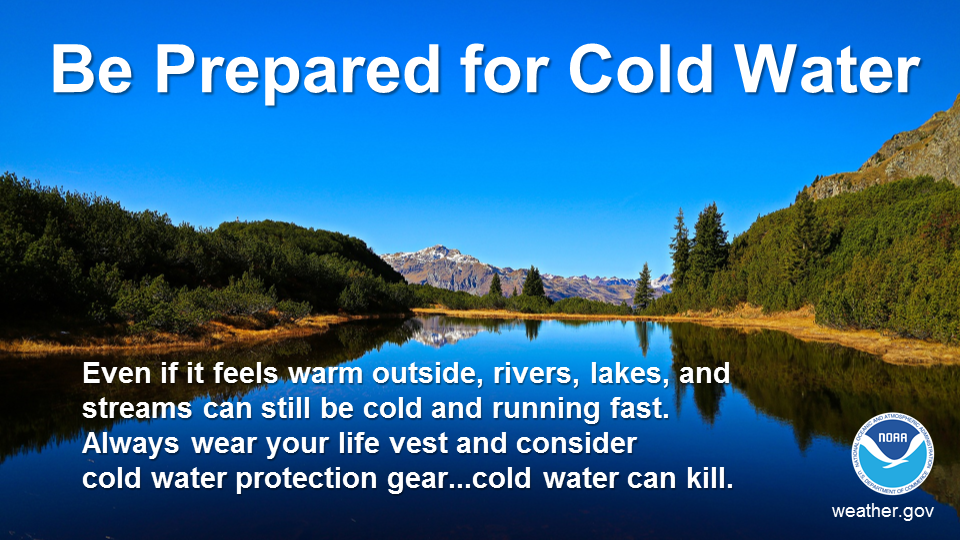Cold water can kill. The following guidelines and images from the U.S. Coast Guard will increase your chance for survival:
- Stay calm. Evaluate your situation and control your breathing.
- Minimize time in the water. Get out as soon as possible safely.
- If possible, utilize any floating objects to get out of the water.
- Keep as much of your body out of the water.
- Evaluate your options.
- If you can swim to safety, stay calm. Do not swim aimlessly because you can lose heat quickly.
- If you cannot swim to safety, conserve energy and heat and await rescue.
- If you cannot get to safety, assume the Heat Escape Lessening Position (H.E.L.P.) position. This protects the critical body areas and slows down the loss of heat. H.E.L.P position means:
- Draw your knees to your chin and keep your legs together.
- Press both arms against your side and keep your head out of the water.
- If possible, form a huddle in the water with others to conserve body heat.
If you need to treat yourself or someone else that has been submerged in cold water, follow the steps below (developed by the Red Cross):
– CALL 911 or the local emergency number.
– Gently move the person to a warm place.
– Monitor breathing and circulation. Give rescue breathing and CPR, if needed.
– Remove any wet clothing and dry the person.
– Warm the person slowly by wrapping in blankets or by putting on dry clothing.
– Hot water bottles and chemical hot packs may be used. Wrap the person in a towel or blanket before applying.
– Do not warm the person too quickly. Do not immerse the person in warm water. Rapid warming may cause dangerous heart arrhythmias.
– Warm the core first (trunk and abdomen), not the extremities (hands, feet). Warming hands and feet first and can cause shock.
READ MORE at weather.gov

